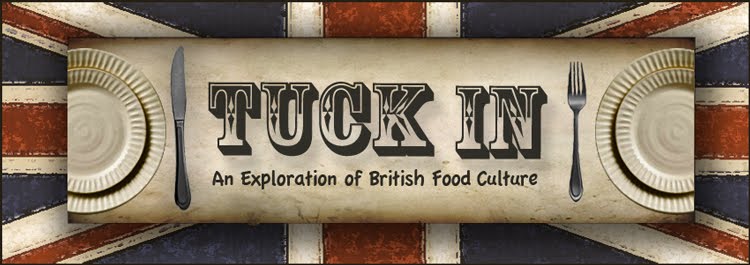He lived in this enormous palace in Surrey in the early 1500s along with 600 people, including his family, guests, servants, workers, and more. And of course these people had to eat…all 600 of them…twice a day. And the Tudors had quite an appetite. Therefore, the palace had to be built with an extensive kitchen and food service area to complete the task.
The business and management work behind this cooking task included budgeting, food ordering and storing, record keeping, distribution control, kitchen staff employment, and general overseeing of the kitchen works. This job was taken very seriously. And the Lord Steward, the highest man in charge of this task, was exceedingly regarded. He had a very important job and any mess-ups could cause a food crisis…what a scandal that would be!
Lord Steward's Office
But enough about the business of the Tudor kitchens, let’s get to the food. The typical Tudor family, not associated with the royal palace, had a generally vegetarian diet. They ate massive amounts of vegetables and, although they kept animals, these were cherished for eggs and milk. King Henry, however, was not concerned with frugality and with almost unlimited expenses, he invested in the finest quality foods. And at this time period, this meant meat. King Henry and the residents of the palace had a diet consisting of about 80% meat. Annually, they consumed around 1200 oxen, 8200 sheep, 2300 deer, 800 calves, 1900 pigs, and 50 wild boars. They also consumed about 5000 calories a day, more than twice the amount needed. And in case you’ve never seen a picture of King Henry, he was consequently morbidly obese.
And then, there was the Great Kitchen, made up of several rooms. The boiling room was where the cooks, equipped with expansive copper pots stewed meat and vegetables. Other areas were for butchers to cut and prepare the meat or chefs to do necessary tasks like turning grain to flour. Spaces for food assembly, like preparing piecrust, were included as well as separate rooms with low wood-burning ovens to serve as both ovens and stovetops. And perhaps the most important room was that with the ceiling tall wood-burning fireplace with a large iron spit inside. Men worked laboriously every day to roast large cuts of meat over that fire for the nightly feast. Further from the kitchens were the areas where food was plated and garnished for distribution. Finally servants took the food from here to the waiting eaters in the Great Hall above.
The kitchens worked like a factory, and a very successful one at that, all under the provisions and watchful eye of the Lord Steward. When visiting Hampton Court’s kitchen, I really got a sense of how intelligent and organized these people were. They may not have had the best knowledge about the nutrition (or they were just too fixated on eating for pleasure) but they did have some ideas about proper sanitation, natural food remedies, and how to successfully run an assembly line and food business. And the food they prepared, although perhaps a little too ancient to appeal to our modern tastes, was actually very delicious and considered to be of the finest quality. New food was introduced into the diet at this time too. Hops were added to ale to make beer, foreign foods were included in the diet because the king could import them, and potatoes were introduced to the country. And the Tudors employed many methods of meat and other food cooking like boiling, roasting, baking, stewing, and grilling, and created inventive pans and pots and other devices to do the job. Although this extensive kitchen was not exactly representative of the means of cooking and foods cooked for the typical English family at the time, the royal Tudor’s innovations in culinary arts most definitely inspired the English food culture of today.
A few more fun facts about the Tudor Kitchens
-King Henry wasn’t always fat. He used to be very fit and active. However, after a crippling accident that prevented him from exercise, his waistband size expanded from 35-54 inches.
- Eating everything on the dinner plate was considered to be very rude.
-Only the King was equipped with a fork. Everyone else used their pocketknife to spear the food into their mouths. Food was served on wooden planks and napkins were placed on the shoulder, rather than the lap.
-Holy days were fasting days and meat was not allowed. So, fish was consumed instead in scarily high numbers that pretty much defeated the purpose of the fast.
-Although he enjoyed his meat, the King was actually very fond of fruit and enjoyed strawberries, cherries, and plums.
(Information sourced form The Taste of the Fire, published by the Historic Royal Palaces)
(Information sourced form The Taste of the Fire, published by the Historic Royal Palaces)











No comments:
Post a Comment